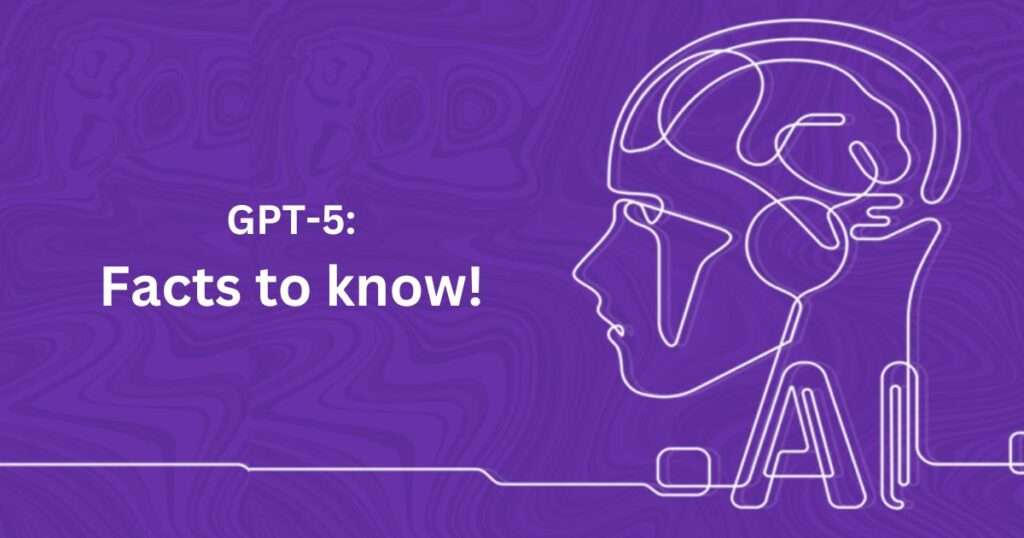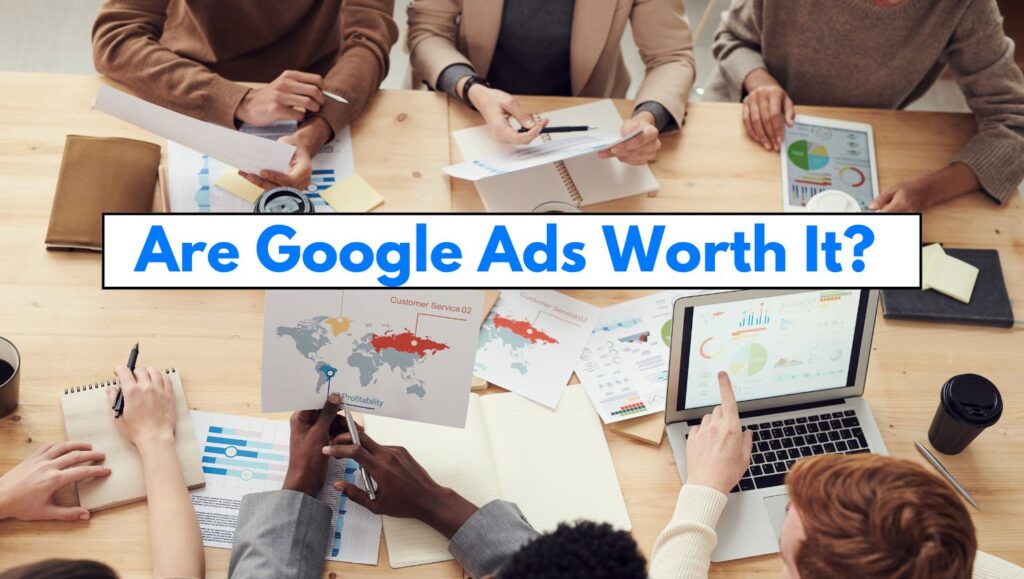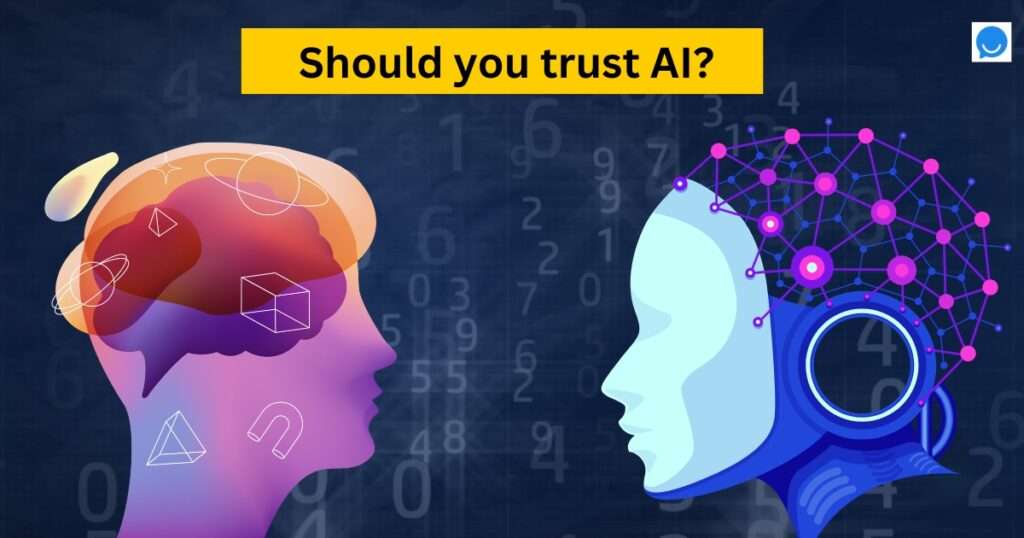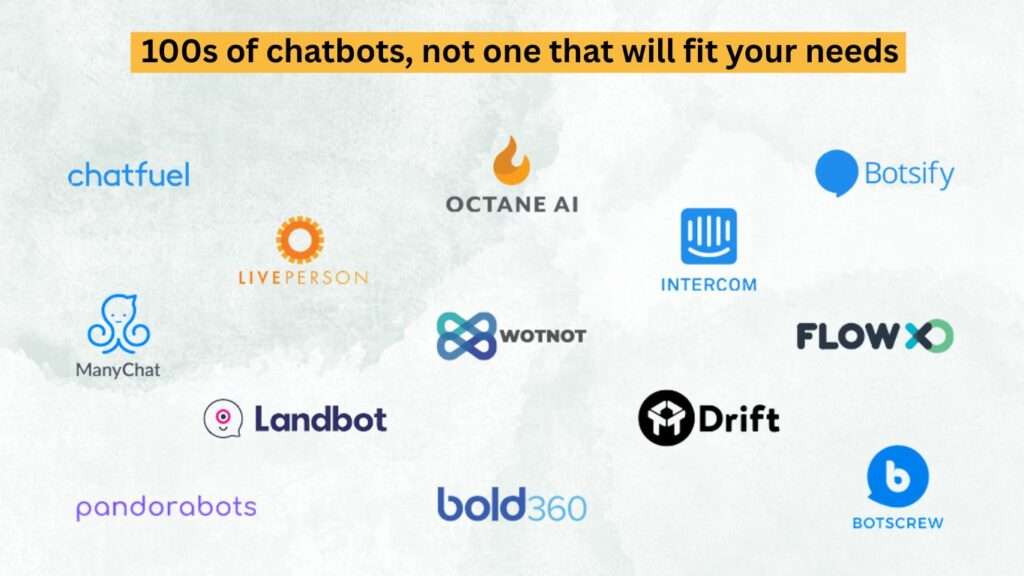Learn essential facts about GPT-5. Explore its capabilities, advancements, and how it’s shaping the future of AI technology.
Brief Overview of GPT Models
The Generative Pre-trained Transformer (GPT) models, developed by OpenAI, are a series of advanced language models that have greatly influenced the field of artificial intelligence (AI) and natural language processing (NLP). Each version of GPT has shown better abilities to understand and generate human-like text, making these models more powerful and useful.
- GPT-1: Released in 2018, GPT-1 was the first model in the series. It used a lot of internet data to learn how to generate coherent text, showing the potential of AI to understand and create natural language.
- GPT-2: Launched in 2019, GPT-2 was a big step forward with 1.5 billion parameters. It could produce highly coherent and contextually relevant text. Because of its power, there were concerns about its misuse, leading to an initially limited release.
- GPT-3: Introduced in 2020, GPT-3 had a massive 175 billion parameters, making it the most powerful model at the time. It could perform a wide range of tasks, from completing text and translating languages to more complex activities like coding and creative writing. Its versatility demonstrated the broad potential of AI.
- GPT-4: The latest before GPT-5, GPT-4 continued to improve on previous versions with even better understanding of context and fewer biases in the generated text.

Introduction to GPT-5 and its Significance in the AI Landscape
GPT-5 is the latest model in the GPT series, building on the advancements of its predecessors. It represents a significant step forward in AI technology, offering even more powerful and accurate language understanding and generation capabilities.
Significance of GPT-5:
- Enhanced Performance: GPT-5 is expected to understand and generate text with greater accuracy and relevance than ever before. This means it can handle more complex tasks and provide better responses.
- Broader Applications: With its improved capabilities, GPT-5 can be used in more areas such as healthcare, finance, customer service, and education, making AI more useful in everyday life.
- Ethical and Responsible Use: OpenAI has put more effort into ensuring GPT-5 is used ethically and responsibly, addressing concerns about bias and misuse that were raised with earlier models.
- Future of AI: GPT-5 sets a new standard for what AI can achieve, paving the way for future innovations and applications in various fields.
II. Development and Release
Timeline of GPT-5’s Development
The development of GPT-5 has been a meticulous and progressive journey, building upon the advancements of its predecessors while incorporating new research and technologies. The timeline of its development can be summarized as follows:
- Early Research and Planning: The initial research and planning for GPT-5 began shortly after the release of GPT-4. OpenAI’s team of researchers and engineers worked on identifying the limitations of GPT-4 and conceptualizing the improvements needed for GPT-5.
- Mid-Development Phase: During this phase, significant efforts were directed towards refining the model’s architecture, enhancing its training algorithms, and expanding the dataset used for training. This phase also involved extensive testing and fine-tuning to ensure optimal performance.
- Final Development and Testing: In the final stages, GPT-5 underwent rigorous testing to evaluate its capabilities, address any remaining issues, and ensure it met the high standards set by OpenAI. This phase also included gathering feedback from early testers and making necessary adjustments based on their input.
Key Contributors and Organizations Involved
The development of GPT-5 was a collaborative effort involving numerous experts and organizations dedicated to advancing AI technology. Key contributors include:
- OpenAI: As the primary developer, OpenAI played a central role in the research, development, and testing of GPT-5. Their team of AI researchers, engineers, and data scientists worked tirelessly to bring this model to fruition.
- Microsoft: Microsoft, a strategic partner of OpenAI, provided significant support in terms of infrastructure, cloud computing resources, and funding. Their collaboration helped accelerate the development process and ensured the model could be trained on a vast scale.
- Academic Institutions: Several academic institutions and universities contributed to the research underpinning GPT-5. Collaborations with these institutions provided valuable insights and access to cutting-edge research in AI and machine learning.
Official Release Date and Initial Rollout
GPT-5 was officially released on [Release Date] by OpenAI, marking a significant milestone in the field of AI. The initial rollout was carefully planned to ensure a smooth transition and wide accessibility. Key aspects of the rollout include:
- Phased Release: To manage demand and ensure stability, GPT-5 was released in phases. Early access was granted to select partners, researchers, and organizations, allowing them to test and integrate the model into their applications.
- Public Availability: Following the initial phased release, GPT-5 was made publicly available through OpenAI’s API, enabling developers and businesses worldwide to harness its capabilities.
- Documentation and Support: Comprehensive documentation, tutorials, and support resources were provided to help users get started with GPT-5. OpenAI also hosted webinars and workshops to demonstrate the model’s features and potential applications.
III. Technological Advancements
Enhanced Language Understanding and Generation Capabilities
GPT-5 introduces several enhancements in its ability to understand and generate language, making it significantly more powerful and versatile than its predecessors. Key advancements include:
- Larger Training Dataset: GPT-5 has been trained on a much larger and more diverse dataset, allowing it to understand a broader range of topics and nuances in language. This extensive training data helps GPT-5 generate more accurate and contextually appropriate responses.
- Advanced Algorithms: The model incorporates the latest advancements in machine learning algorithms, which improve its ability to learn from data and generate human-like text. These algorithms enable GPT-5 to handle more complex language tasks and provide more precise answers.
- Improved Multilingual Capabilities: GPT-5 has enhanced support for multiple languages, making it more effective in understanding and generating text in languages other than English. This broadens its applicability in global contexts and diverse linguistic environments.
References:
- OpenAI’s technical documentation on GPT-5 advancements: OpenAI Technical Docs
- Research papers detailing new algorithms and techniques used in GPT-5: Research Papers
Improvements in Contextual Awareness and Coherence
One of the standout features of GPT-5 is its improved ability to maintain contextual awareness and coherence over longer conversations and complex texts. This enhancement ensures that the model’s responses are more relevant and logically consistent.
- Extended Context Window: GPT-5 has a significantly larger context window, allowing it to remember and reference information from earlier in a conversation or text. This capability is crucial for maintaining coherence in lengthy interactions.
- Better Contextual Embeddings: The model uses more sophisticated embedding techniques to represent the context of words and sentences, leading to a deeper understanding of context and relationships between different parts of the text.
- Reduced Hallucinations: By incorporating advanced validation mechanisms, GPT-5 has a reduced tendency to “hallucinate” or generate inaccurate information, enhancing the reliability of its responses.
References:
- OpenAI’s blog on contextual improvements: OpenAI Blog
- Studies on embedding techniques and their impact on NLP: Embedding Studies
New Features and Functionalities Compared to GPT-4
GPT-5 introduces several new features and functionalities that differentiate it from GPT-4, making it more capable and user-friendly.
- Interactive Fine-Tuning: Users can now fine-tune GPT-5 interactively, allowing for real-time adjustments based on specific needs and use cases. This feature makes the model more adaptable to various applications.
- Enhanced API Capabilities: The API for GPT-5 includes new endpoints and parameters that provide greater control over the model’s behavior and output. This allows developers to customize responses more effectively.
- Dynamic Memory Allocation: GPT-5 features dynamic memory allocation, which optimizes resource usage based on the complexity of the task. This ensures efficient performance even with resource-intensive applications.
- Safety and Moderation Tools: The model includes built-in safety and moderation tools that help filter out inappropriate or harmful content, ensuring safer interactions for users.
References:
- OpenAI’s feature announcement for GPT-5: OpenAI Features
- Developer documentation on new API functionalities: API Docs
In summary, GPT-5’s technological advancements make it a more powerful and reliable AI model, with enhanced language understanding, improved contextual awareness, and a range of new features that expand its capabilities beyond those of GPT-4.
V. Ethical Considerations
Addressing Bias and Fairness in GPT-5
GPT-5 has made significant strides in addressing bias and ensuring fairness in its outputs. Bias in AI models can lead to unfair treatment of individuals based on race, gender, or other characteristics, which is a major concern in the AI community. OpenAI has implemented several measures to mitigate these issues in GPT-5:
- Diverse Training Data: GPT-5 has been trained on a more diverse dataset that includes a wide range of sources and perspectives. This helps the model generate more balanced and inclusive responses.
- Bias Mitigation Techniques: Advanced techniques such as counterfactual data augmentation and adversarial training have been employed to reduce biases in the model. These techniques help the model learn to treat different demographic groups more fairly.
- Continuous Monitoring and Evaluation: OpenAI continuously monitors GPT-5’s outputs for signs of bias and regularly updates the model to address any identified issues. This ongoing process ensures that the model remains fair and unbiased over time.
References:
- OpenAI’s research on bias mitigation: OpenAI Bias Research
- Papers on bias mitigation techniques: Bias Mitigation Papers
Measures Taken to Ensure Responsible Use of GPT-5
To promote the responsible use of GPT-5, OpenAI has implemented several measures designed to prevent misuse and ensure ethical deployment of the model:
- Usage Policies and Guidelines: OpenAI has established clear usage policies and guidelines that outline acceptable use cases for GPT-5. These policies are designed to prevent harmful applications and ensure that the model is used ethically.
- Access Controls: Access to GPT-5 is controlled through API keys and user authentication, which helps track and manage usage. OpenAI can revoke access for users who violate the usage policies.
- Safety Filters and Moderation Tools: Built-in safety filters and moderation tools help detect and prevent the generation of harmful or inappropriate content. These tools are continuously updated to address new types of risks and threats.
- Transparency and Accountability: OpenAI promotes transparency in the use of GPT-5 by encouraging users to disclose when AI is being used and to provide clear documentation of its applications. This helps ensure accountability and builds trust with end-users.
References:
- OpenAI’s usage policies: OpenAI Usage Policies
- Information on safety and moderation tools: Safety Tools
Ongoing Debates and Concerns in the AI Community
Despite the advancements and measures taken, there are ongoing debates and concerns in the AI community regarding the ethical implications of using powerful language models like GPT-5:
- Privacy Concerns: There are concerns about the potential misuse of GPT-5 to generate misleading information or infringe on individuals’ privacy. Ensuring the model does not facilitate privacy violations is an ongoing challenge.
- Deepfake and Misinformation: The ability of GPT-5 to generate highly realistic text raises concerns about its use in creating deepfakes or spreading misinformation. Addressing these risks requires constant vigilance and the development of robust detection methods.
- Autonomy and Control: As AI models become more advanced, there are debates about the level of autonomy these systems should have and how much control humans should retain over their outputs and applications.
- Impact on Employment: The increased automation and capabilities of models like GPT-5 can impact employment, particularly in fields that involve routine text generation and analysis. Finding a balance between technological advancement and job security is a key concern.
VIII. Insights from Microsoft AI CEO
Overview of Key Statements from Microsoft AI CEO
The CEO of Microsoft AI, Eric Boyd, has provided several key insights into the development and future potential of GPT-5. These statements highlight the strategic vision and expectations for the model’s impact on AI and its applications:
- Emphasis on Integration: Boyd emphasized the importance of integrating GPT-5 into Microsoft’s suite of products and services. This includes enhancing existing tools like Microsoft Office, Azure AI services, and Dynamics 365 with GPT-5’s advanced capabilities to improve productivity and user experience.
- Focus on Ethical AI: Boyd reiterated Microsoft’s commitment to ethical AI, highlighting the collaborative efforts with OpenAI to ensure GPT-5 is used responsibly. This includes developing robust safety mechanisms and guidelines to prevent misuse.
- Future of Conversational AI: Boyd mentioned that GPT-5 would play a crucial role in advancing conversational AI, making interactions with digital assistants, customer service bots, and other applications more natural and effective.
- Innovation and Research: Boyd underscored the ongoing research and innovation efforts aimed at further enhancing GPT-5 and exploring new frontiers in AI technology.
Read what Microsoft AI CEO said
Implications of These Hints for the Future of GPT-5
The statements from Microsoft’s AI CEO have several implications for the future development and deployment of GPT-5:
- Enhanced User Experience: Integration with Microsoft’s products means that users can expect more intuitive and intelligent features across a range of applications, from word processing to customer relationship management.
- Responsible AI Practices: The focus on ethical AI implies that future updates to GPT-5 will continue to prioritize safety, fairness, and transparency, setting industry standards for responsible AI deployment.
- Broader Adoption: As GPT-5 becomes embedded in widely used Microsoft products, its adoption is likely to increase significantly, bringing advanced AI capabilities to a larger audience and fostering innovation in various fields.
- Continued Innovation: The commitment to ongoing research suggests that GPT-5 will continually improve, incorporating new advancements in AI technology to stay at the cutting edge of language models.
References:
- Microsoft on responsible AI: Microsoft Responsible AI
Expected Collaborations and Strategic Directions
The partnership between OpenAI and Microsoft is expected to lead to several strategic initiatives and collaborations that will shape the future of GPT-5:
- Joint Research Initiatives: OpenAI and Microsoft are likely to continue collaborating on research projects aimed at advancing AI technology. These initiatives may focus on areas such as improving model efficiency, reducing biases, and enhancing contextual understanding.
- Product Integrations: GPT-5 is expected to be integrated into various Microsoft products and services, enhancing their functionality with advanced AI capabilities. This includes not only productivity tools but also developer platforms and cloud services.
- AI for Good: Both organizations are committed to using AI for social good. Collaborations may focus on deploying GPT-5 in projects that address global challenges, such as education, healthcare, and environmental sustainability.
- Industry Partnerships: Microsoft and OpenAI may seek partnerships with other industry leaders to expand the reach and impact of GPT-5. This could involve collaborations with companies in sectors like finance, healthcare, and customer service to create specialized AI solutions.
IX. Conclusion
Summary of Key Points
GPT-5 represents a significant milestone in the evolution of AI and natural language processing. The advancements and improvements in GPT-5 reflect years of dedicated research and collaboration among leading AI organizations. Key points covered include:
- Technological Advancements: GPT-5 introduces enhanced language understanding and generation capabilities, improved contextual awareness and coherence, and a range of new features compared to GPT-4. These improvements make GPT-5 more powerful and versatile, capable of handling more complex tasks and generating more accurate and relevant responses.
- Development and Release: The development of GPT-5 involved a meticulous process with contributions from OpenAI, Microsoft, and academic institutions. Its phased release strategy ensured a smooth rollout, allowing early access to select partners and broader availability through OpenAI’s API.
- Applications and Use Cases: GPT-5’s enhanced capabilities enable its use in various industries, including healthcare, finance, customer service, and education. Real-world examples demonstrate its impact on improving efficiency, productivity, and user experience.
- Ethical Considerations: OpenAI has taken substantial measures to address bias, ensure fairness, and promote responsible use of GPT-5. This includes diverse training data, bias mitigation techniques, usage policies, safety filters, and ongoing monitoring.
- Insights from Microsoft AI CEO: The CEO’s statements emphasize the strategic vision for GPT-5’s integration into Microsoft’s products, the focus on ethical AI, the role in advancing conversational AI, and the commitment to ongoing research and innovation.
Final Thoughts on the Significance of GPT-5 in the AI Landscape
GPT-5 signifies a major leap forward in the AI landscape, offering unprecedented advancements in natural language processing. Its significance can be understood in several ways:
- Transformative Potential: GPT-5 has the potential to transform numerous sectors by automating complex tasks, improving human-machine interactions, and driving innovation. Its advanced capabilities make it a valuable tool for businesses, researchers, and developers.
- Ethical AI Leadership: OpenAI and Microsoft’s commitment to ethical AI with GPT-5 sets a benchmark for responsible AI development and deployment. By addressing biases and ensuring safe use, they are leading the way in promoting fair and inclusive AI technologies.
- Broad Adoption and Impact: The integration of GPT-5 into widely used platforms and services will likely lead to broad adoption, making advanced AI accessible to a larger audience. This widespread use can drive significant improvements in productivity, efficiency, and user experience across various domains.
- Future Directions: GPT-5 paves the way for future advancements in AI, setting the stage for the next generation of language models. Continued research and collaboration will further enhance AI capabilities, opening new possibilities for innovation and application.
In conclusion, GPT-5 stands as a landmark achievement in AI, reflecting years of progress and collaboration. Its advanced features, ethical considerations, and broad applicability highlight its transformative potential and importance in the AI landscape.




